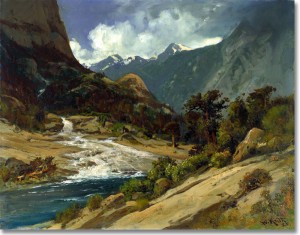
What Is Water Conservation ?
Water Conservation manages fresh water (rivers, lakes, and wells) as a limited natural resource. Doing so has the additional benefits of conserving energy and sustaining environmental health. While state policies have embraced water conservation for decades, the California Code of Regulations and the Building Standards Codes have lagged behind in codifying regulations which mandate conservation and allow alternate uses of non-potable water resources, such as:
- rainwater harvesting
- ultra low-flow plumbing fixtures
- private property reused water (e.g., clothes washer gray water)
- public utility reclaimed water (treated “purple pipe” sewer water)
How Is Ground Water Used ?
Ground water still provides 33% of the state’s total fresh water supply and 18% of the total public supply. It has been over-pumped (rate of extraction exceeding rate of replenishment) for decades, especially during recurring droughts, which has caused substantial and irreversible land subsidence and permanent reduction of aquifer storage. Local environmental health departments and water districts are responsible for issuing water well permits (construction/ abandonment) and septic system permits. The Department of Water Resources (DWR) and the State Water Resources Control Board (SWRCB) establishes well construction standards. Domestic wells for irrigation and potable (drinking) water must be drilled by a licensed contractor (C57) .
What Is The Future Of Water Conservation ?
The U.S. population has doubled in the past 50 years, and fresh water demand has tripled. At least 36 states now have systemic water shortages. With global warming affecting weather patterns, water conservation has become a national propriety. Integrating cost-effective water conservation efficiencies in our daily behaviors is critical for assuring an adequate future supply for people, industry, business, agriculture, and aquatic life. Embracing new practices, techniques, programs, and technologies which improve the use and reuse of water will counteract the impact of forecasted long-term diminishment in the ability of California’s water sheds to deliver an adequate supply. Check the Links below for additional information.
Links
BUILDING in CALIFORNIA
- San Francisco Developer Guidebook-Non Potable Water Use
- Education
- Legislation
- Media
- Videos
- Library
- Brochures
- Interpretations
Building Standards Commission
- 2013 Plumbing Code
- 2013 Green Building Standards
Environmental Protection Agency (EPA)
Graywater
Legislation
USGBC water reduction credits
Manufactures
San Francisco Public Utility Commission
State Water Resources Control Board
Rain Water Harvesting
- Rainwater collection-consumer resources (NSF)
- Santa Monica-Rainwater Harvesting Programs and Information
Regional Water Quality Control Boards
State Department of Water Resources